I HAVE BEEN TO ARARAT TWICE IN TURKEY BUT NEVER CLIMBED MOUNT ARARAT BUT ONLY ADMIRED IT FROM A DISTANCE BUT THOSE WHO BELIEVE IN NOAH'S ARK WILL HAVE PLENTY TO THINK AFTER READING THIS ARTICLE
This is Noah's Ark!
Ark viewed from rear, pointed front in distance
Friends, please prayerfully consider the evidence you will see on Noah's Ark. It may not be important or necessary for you to learn of this discovery, but there are millions of people who need confirmation of biblical artifacts in order to strengthen their faith in God and the Bible. Satan is strongly attacking this and other discoveries in order to deceive men of God's truth. All the false stories about finding Noah's ark were created by Satan to "muddy the water," and cause disbelief in the genuine.
The Real Noah's Ark!
Top Points to Consider
1. It is in the shape of a boat, with a pointed bow and rounded stern.
2. Exact length as noted in biblical description, 515 feet or 300 Egyptian cubits. (Egyptian not Hebrew cubit would have been known to Moses who studied in Egypt then wrote Genesis.)
3. It rests on a mountain in Eastern Turkey, matching the biblical account, "The ark rested . . . upon the mountains of Ararat" Genesis 8:4. (Ararat being the name of the ancient country Urartu which covered this region.)
4. Contains petrified wood, as proven by lab analysis.
5. Contains high-tech metal alloy fittings, as proven by separate lab analyses paid for by Ron Wyatt, then performed later by Kevin Fisher of this web site. Aluminum metal and titanium metal was found in the fittings which are MAN-MADE metals!
6. Vertical rib timbers on its sides, comprising the skeletal superstructure of a boat. Regular patterns of horizontal and vertical deck support beams are also seen on the deck of the ark.
7. Occupied ancient village at the ark site at 6,500 ft. elevation matching Flavius Josephus' statement "Its remains are shown there by the inhabitants to this day."
8. Dr. Bill Shea, archaeologist found an ancient pottery sherd within 20 yards of the ark which has a carving on it that depicts a bird, a fish, and a man with a hammer wearing a headdress that has the name "Noah" on it. In ancient times these items were created by the locals in the village to sell to visitors of the ark. The ark was a tourist attraction in ancient times and today.
9. Recognized by Turkish Government as Noah's Ark National Park and a National Treasure. Official notice of its discovery appeared in the largest Turkish newspaper in 1987.
10. Visitors' center built by the government to accommodate tourists further confirms the importance of the site.
11. Huge anchor stones were found near the ark and in the village Kazan, 15 miles away, which hung off the rear of the ark to steady its ride.
12. The ark rests upon Cesnakidag (or Cudi Dagi) Mountain, which is translated as "Doomsday" Mountain.
13. Dr. Salih Bayraktutan of Ataturk University stated, "It is a man made structure, and for sure it's Noah's Ark" Common Sense. This same article also states "The site is immediately below the mountain of Al Judi, named in the Qur'an as the resting place of the Ark." Houd Sura 11:44
14. Radar scans show a regular pattern of timbers inside the ark formation, revealing keels, keelsons, gunnels, bulkheads, animal chambers, ramp system, door in right front, two large barrels in the front 14' x 24', and an open center area for air flow to all three levels.
Above: 35 minute video from 4 hour DVD, Revealing God's Treasure
The Bible
There is only one verse in the Bible which gives us a hint of where we the ark came to rest, "the ark rested...upon the mountains of Ararat." Genesis 8:4. Where is Ararat? The name Ararat is a large area or ancient country covering eastern Turkey, western Iran and western Russia, as shown in yellow below.
"The name Ararat, as it appears in the Bible, is the Hebrew equivalent of ...Urartu, ancient country of southwest Asia...mentioned in Assyrian sources from the early 13th century BC" Encyclopaedia Britanica 15th ed. Some have mistakenly assumed the Bible meant the ark came to rest on Mount Ararat (Agri Dagh), but that is not the case. Mount Ararat is 17,000 feet tall, and is a post-Flood volcanic mountain that gained its height after the Flood, therefore there is no reason to assume it is a more likely candidate for the resting place of the ark, instead it is a less likely candidate. The ark came to rest in the mountains of the ancient country of Urartu, not on Mt. Ararat.
The Ancient Historical Record
Flavius Josephus, c. 90 AD, the famous Jewish historian stated, "Its remains are shown there by the inhabitants to this day." He quotes Berosus the Chaldean, c. 290 BC, who indicated tourists would take home pieces of the ark for making good-luck charms, "It is said there is still some part of this ship in Armenia, at the mountain of the Cordyaeans; and that some people carry off pieces of the bitumen, which they take away, and use chiefly as amulets for the averting of mischiefs." These comments tend to indicate its location would not be in an inaccessible area. At some point, the ark was covered by a mud and lava flow which caused future generations to lose its location.
Life Magazine 1960
The 1960 expedition to the ark found a formation whose top sides were even with ground level as seen in the photos above. The site researched by Ron Wyatt is 18.2 miles south of Mount Ararat at the elevation of 6,524 ft., in the "mountains of Ararat." A Turkish captain, Llhan Durupinar, was reviewing NATO Geodetic Survey photographs of the area in 1959, and noticed a boat shaped formation. Others in the U.S. then analyzed the photograph including Dr. Arthur J. Brandenburger, world famous expert in photogrammetry, who said "I have no doubt at all that this object is a ship. In my entire career I have never seen an object like this on a stereo photo. Even the approximate length of the object fits" The Ark File, p118. An expedition sponsored by a party from the U.S. included among others, Rene Noorbergen, later author of The Ark File; and George Vandeman, evangelist, and Dr. Brandenburger. They made a visual inspection of the site and conducted no scientific studies, only some digging and dynamiting of the ark and and mistakenly concluded this site was just an "odd geological formation." The expedition was expecting to find on the surface of the ark "petrified beams" The Ark File, p126, by digging in a few places. An article then appeared in the September 5th, 1960, Life magazine, shown above, revealing a very impressive aerial photo of an extremely large boat-shaped object, plus two photos taken by the expedition. Seventeen years later in 1977, Mr. Wyatt made his first of 24 trips to the ark, and he was impressed that this really was the remains of Noah's Ark! In the research he performed over the next 15 years, Mr. Wyatt successfully performed metal detection tests and subsurface radar scans of the site, and he proved this site really IS the mud-and-lava covered remains of Noah's Ark!
Government Confirmation:
Visitors' Center Opened
The Turkish government has double-verified Mr. Wyatt's tests, and they have given him credit for the discovery. The announcement appeared in Turkey's largest newspaper on June 21, 1987. The area was first designated a National Park, and then it was upgraded to the status of a National Treasure. The government has built a visitors' center overlooking the site and issued official tourist brochures so people of all races can come and see the ark!
Above: Visitors' Center, overlooks the ark site which is to the left
Above: Inside the Visitors' Center at Noah's Ark National Park. 2009
The Announcement of the Discovery
Translation of newspaper article announcing the discovery of Noah's Ark:
"THE NOAH'S ARK OPENED TO TOURISM. The surrounding area of a ship-like soil pile nearby the village of Uzengili within the township of Dogubeyazit as a national park. Dogubeyazit - The American Academians confirmed the soil pile nearby the village of Uzengili in the township of Dogubeyazit is Noah's Ark. The surrounding area is declared to be a national park and it is opened to tourism. 15 Km away from Dogubeyazit at the village of Uzengili, Ronal Eldon Wyatt and his colleagues, an American research group, made researches after their Turkish colleagues completed their investigations. Upon analyzing the soil structure and finding specific iron pieces and particles, the American researchers concluded that Noah's Ark is located at Uzengili village. With a ceremony attended by the Governor of Agri Province, Subgovernor of Dogubeyazit township, the Mayor Usha, Mr. Osman Baydar and the local and foreign scientists and researchers and a group of citizens, the Noah's Ark is opened to touristic visits. The Governor Serket Ekinci said, "In recent years, Turkey has become one of the countries to be visited in worldwide tourism. It is assured that the Noah's Ark, mentioned in Quran and the Bible, is located here. I am honored to pen this area having the Noah's Ark which attracts attentions of millions in the world. I owe our thanks to those national and foreign scientists and researchers contributed to the researches so as to locate Noah's Ark. At the social facilities to be built, we will accommodate local and foreign tourists and have our country make hard currency." translation courtesy Val Smith www.throneofgod.com
Government sign directs your way to the ark
Kevin Fisher standing in the "Valley of Eight" along the main highway, this government sign points your way to "Noah's Big Boat." Behind me is the infamous Mt. Ararat. Notice the sign points away from the post-Flood mountain. The ark rests in the
direction of the sign, up on "Doomsday Mountain" 5 Km away, Noah's pride and joy. 2009
The Length Matches the Biblical Record!
Noah's Ark at 515 feet compared to the U.S.S. Kitty Hawk aircraft carrier. Graphics Mark Johnson, ArkFind.com
The length of the ruins of the ark is 515 ft., which is exactly 300 Egyptian cubits (20.6 inches)! Moses was schooled in Egypt and was not familiar with the Hebrew cubit which was not even in existence when Moses wrote Genesis. So the Egyptian cubit
was used by Moses when describing the measurements of the ark.
The brown material above represents the outline and shape of the ark today. The Bible said there were three levels, and based upon the present depth of the ark, it may have originally appeared as shown above. (diagram courtesy anchorstone.com)
Ark Excavated by God
Pre-earthquake photo
The photo above shows the ark deeply embedded in the surrounding terrain. In 1978, when Mr. Wyatt was returning to Nashville, he prayed that God would send an earthquake to "excavate" the site. When arriving in Nashville the headlines read, "Earthquake in Eastern Turkey." The earth dropped from around the sides of the ark, defining the formation more clearly and making it more accessible for research.
Above: We can see how the earth has dropped around the sides of the ark
Metal Used in the Ark!
The ark contains a large amount of metal fittings which were used to secure the large timbers together. These two photos below are from our October 2000, trip to the site. Notice how there was once two large rivet fasteners, but now only one is left. A large metal plate was positioned behind the rivets. I received a positive metal reading when passing the metal detector over the rivets. We should not be surprised to find metal alloys used in the ark, because Genesis 4:22 states, "Tubal-Cain, an instructor of every craftsman in bronze and iron."
(Left) Ron Wyatt found a beautiful specimen of one of the metal rivets used on the ark. It was tested and found to contain high-tech metal alloys, such as titanium, magnesium, and aluminum, etc. Critics have said Ron did not find this fine specimen on the ark but just manufactured it. Well, as you will see below, we found the same objects and had them tested. They too proved to have the same metals, in the same percentages! (Below) Two rough rivets in lower portion of photo.
Our Own Metal Samples Tested
Lab Report Shows
Rivet Contains Man-Made Metals!
Click for PDF of Report on washer
Below is what appears to be part of a large washer that would have been slipped over a shaft and then secured on the shaft by flaring out the end of the shaft. We have drawn circles on the photo to demonstrate the circular effect in the specimen. The surrounding material on the side of the ark around this object had a greenish color. Assuming a circular shape, this sample would be the same size as the rivet found by Mr. Wyatt. (The photo at right is of the rivet as we found it on the ark)
Galbraith Laboratories of Knoxville Tennessee has tested the specimen for three metals I requested. I asked them to test for aluminum metal, iron metal, and titanium metal. It costs $60 to test for each metal requested. The results show 8.35 % iron metal, 8.35% aluminum metal, and 1.59% titanium metal. ALUMINUM AND TITANIUM METALS ARE NOT FOUND IN NATURE!!! THIS OBJECT IS MAN-MADE, USING ADVANCED TECHNOLOGY!! These results are similar to those produced in the analysis of the rivet found by Mr. Wyatt. Since the specimen is fossilized, it is assumed a large portion of it is now silica replacement, reducing the percentage of metal that was originally in it when it was made. These rivets are found in several locations on the outside of the Ark, and are probably buried inside the Ark by the hundreds or thousands. In comparison to others, this specimen is in poor condition.
Second specimen
is also man-made
with aluminum metal!
The second item I had tested by the lab reveals that is is also man-made. It was found on the side of the ark. It produced positive metal readings with my metal detector when I was at the site. Later in Istanbul, I tested it with a magnet which produced an attraction to it. It appears to have been flared out (left photo) by pounding the center when it was hot. The left hand photo is facing us the way it appeared on the starboard side of the Ark. Notice the side view (right view) which shows the tapering effect. Test results from Galbraith Labs, completed in June 2001, reveal it has man-made aluminum metal in it! It contains 8.08 percent aluminum metal, 8.24 percent iron metal, 1.34 percent titanium metal, and 3.82 percent magnesium metal. Click on link below to read lab report.
Click here for PDF test results for this metal rod
This may be the end of a metal rod. Turkish officials reported removing four foot long metal rods from the site.
Metal Bracket
In May, 1985, Dr. John Baumgardner of Los Alomas Labs, was inspecting the ark with a metal detector when he became startled and said, "Undecomposed Iron!" A rectangular beam was protruding from the side of the ark, with iron flakes. He found a beautiful right angled wrought iron bracket which had been stretched and hammered, showing preferential gradiance. John tested it at Los Alomas Labs and it was found to be 91.84% iron FE203.
Ballast?
Below is a suspected piece of metal ballast that may have been thrown into the bottom of the ark when the craftsmen were through forming metal brackets and had metal waste left over. Notice the concave features on almost every side, where other pieces of ballast were pressed against it when it was still hot. I found this near the ark. (Two photos of same item.)
Metal Wedge?
This appears to be some manganese ballast which was poured into the hull in a liquid state,
then hardened and took the curvature of the hull (right photo). It has a coating on the convex side, while the flat side appears to be metal. Found a few feet away from the ark.
Ballast Found by Wyatt
This is an example of the metal ballast that has been found in the hull of the ark. It is made up of manganese primarily, which is a by-product of forming magnesium that was used in the metal rivets. Found by Ron Wyatt.
Square Object with "X" Impression
The western side of the ark had this square object that had the appearance of metal on its top and three sides.. It also contained an impression in it, much like it had been struck while it was hot. It was at a higher level where I could not measure it. It may have been 8 inches in diameter.
Vertical Rib Timbers on the Sides
Above: On the left are some of the vertical rib timbers on the outside of the ark
Above: A close-up shot of the petrified timbers, on western, starboard side
The port or eastern side of the ark, near the front, was scraped off by Ron in an effort to view the timbers without loose, crumbling material in the way. This process revealed the lighter color rib timbers in a systematic, vertical pattern. You can see a darker, curved pattern across the top, which represents the remnants of a large keelson. (photo courtesy anchorstone.com)
Deck Posts
Above: Standing on the ark, we see the western, starboard, inside of the ark, which
boasts these horizontal deck support posts extending above the matrix
material in the center and right portions of this photo.
Convex Symmetrical Deck
Above: The symmetrical shape of the ark can been seen from the rear, with a center mound
that is the deck area that has collapsed, and the port and starboards side to the left and right.
A boy can be seen at the rear.
The Petrified Wood
This example of the petrified wood shows distinct right angles and the wood grain of the wood. Specimen found by Ron Wyatt.
A close-up photo of an 18 inch deck plank unearthed before Turkish officials by Ron Wyatt and features three distinct layers of wood with glue protruding from the end. It was tested and proved to be petrified wood. It is 18 inches in length and has a few visible nails. It is made of three layers of wood with dark pitch on top. At the bottom right you can see dark spots which may be consistent with Pecky Cypress wood, so this may be the gopher wood described in the biblical account. This deck timber was analyzed at Galbraith Labs in Knoxville, Tennessee, and was found to have a total carbon content of 0.7100%. From this figure you would deduct the inorganic carbon of 0.0081%, leaving 0.7019% organic carbon, which is a much higher level of organic carbon than inorganic, so this indicates this was once living matter.
Original Location
Graphics courtesy Mark Johnson www.arkfind.com
The ark originally came to rest higher on the mountain after the Flood. At some point in the first two thousand years of resting in the mountains of Ararat, a volcano erupted above the ark and moved the ark further down the mountain and then impaled it on a rock outcropping where it rests today.
The ark rests on Cesnakidag Mountain, which is interpreted as "Doomsday" Mountain. The Flood would be considered a real "doomsday" since it destroyed the world. The mountain is made of sedimentary cretaceous water laid rock, which means it was formed by the Flood waters and is not a post Flood formation.
Above: This is the alcove, in the center and rear, where the ark came to rest originally, higher on the mountain.
In the distance straight ahead is the Iranian guard tower. To the left on the ridge is the Turkish guard tower.
If you walk up here there is a good chance you will be arrested by the Turks, as has already happened.
Artifacts found inside the Ark
Core Drill by Ron Wyatt
A look inside Noah's Ark!
This is a look through the six inch diameter core drill Ron Wyatt performed years ago. It leads to a chamber which contained petrified animal dung coprolite (below), cat hair, the base of an antler (below), human hair, and man-made fiber that is similar to fiber optic. Ron closed it up to prevent contamination inside.
Various Pictures
Crumbling Apart
This photo was taken of the side of the ark. You will find petrified wood and mud matrix material.
(Left) Perhaps a petrified piece of fruit, or some other object, 3 1/2" diameter, found in the bow of the deck. (Right) Black seeds? at top of fruit.
Google Earth Image of the Ark
Visitors' Center seen toward top, ark at bottom center.
39 26' 26.09" N and 44 14' 04.29" E
In November 2000, a separate group takes GPS readings to calculate the length of the ark
Ostracon or carving on pottery shard,
depicts man building something,
perhaps Noah.
Found by an archaeologist 60 feet from ark
Above: Ostracon image of man hammering
Below: Image of man releasing birds
Above: Turkish postcard of the Dogubayazit area, featuring Noah's big boat, on left.
The Village of Eight & the Anchor Stones
What are anchor stones? They hung from ships to act as additional ballast,
or to help point the bow in a certain direction.
Kevin Fisher stands next to a typical anchor stone found in the Mediterranean area,
much smaller than those which were used on Noah's Ark.
Above: Large anchor stone with Mt. Ararat in distance, and Dr. Robert Michelson of Georgia Tech
inspecting the stone. The stones were cut off in this area, then the ark floated more freely
to its final landing place about 12 miles away.
Above: The stones would have been hung from the ark to stabilize it
Above: Broken stone with eight crosses, in the Village of Eight, named for the eight
survivors of the Flood. The largest cross represents Noah, to the left is a cross for Mrs. Noah,
then three smaller crosses for the sons of Noah, then the three smallest for the wives of the sons.
Above: The top was broken off by vandals, to the right, but was laying nearby.
Crosses are carved on this one also.
|
---
|
See More pictures of our trip to the ark:
Go to the Tour Page for More Photos
An excavation permit to dig into the ark has never been issued by the Turkish government, preventing thorough documentation of the site. Future plans to excavate the ark mandate a building must first be constructed over the entire 515 ft. long structure, with the entire project estimated to cost $3-4 million. The money has yet to be raised. Partial documentation of this site has periodically appeared on The 700 Club, 20/20, The Discovery Channel, The Learning Channel, CNN, Encounters, and various local Christian TV stations, but Ron Wyatt never had his own documentary shown on national television.
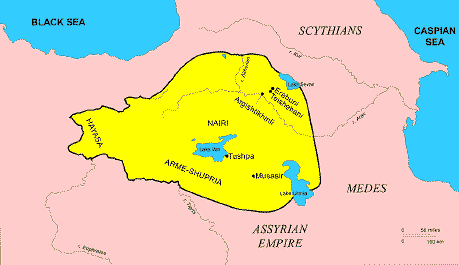
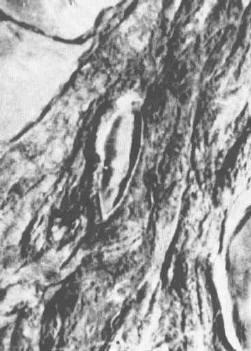
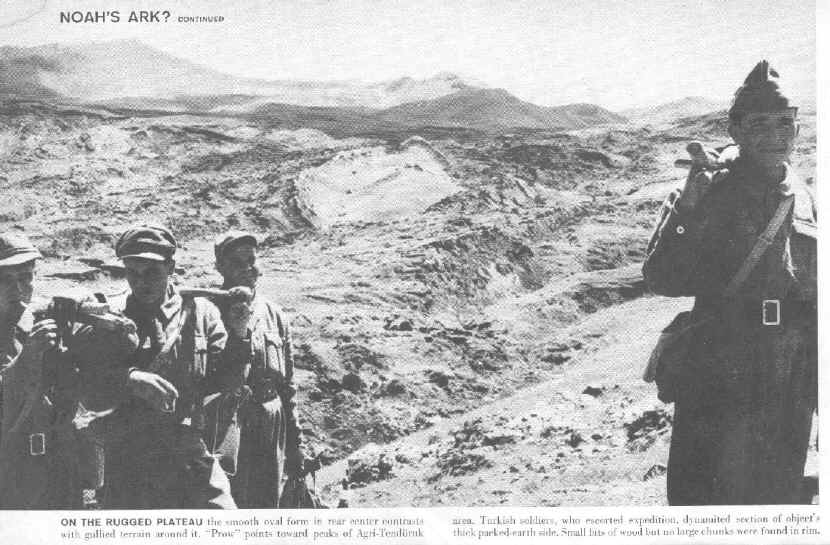
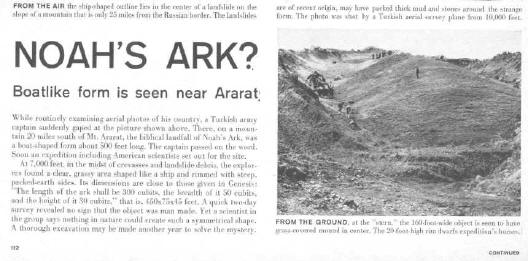
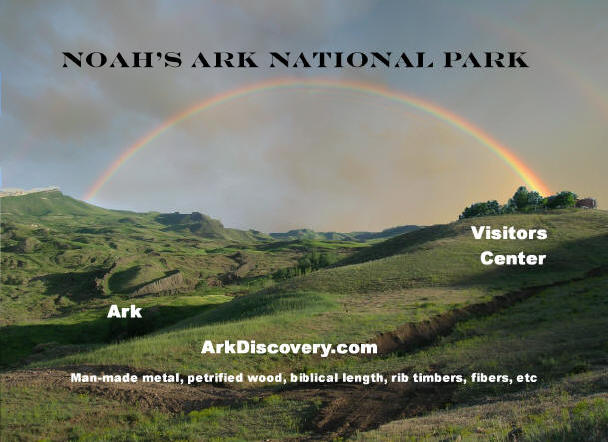
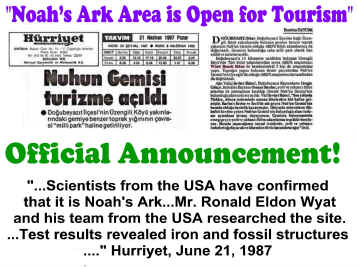
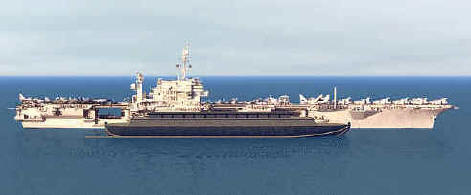



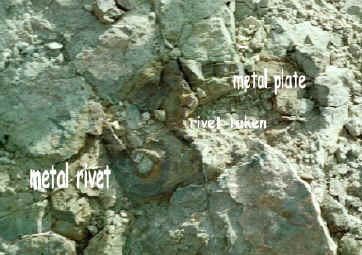
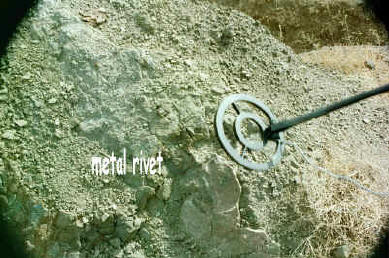
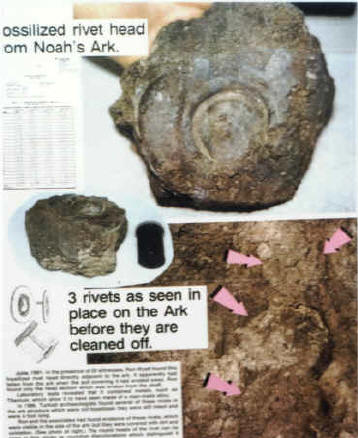
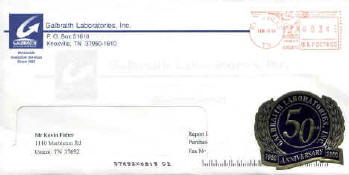
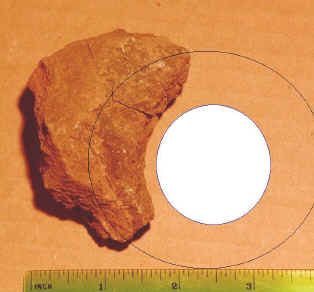
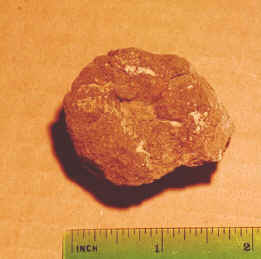
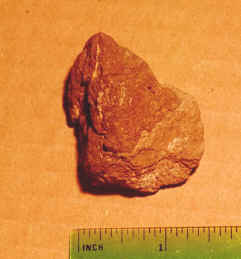
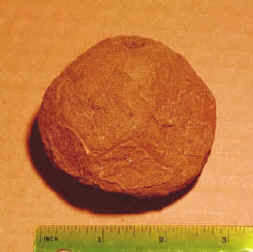
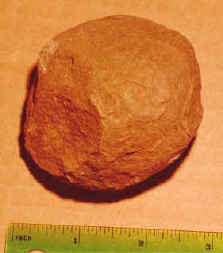
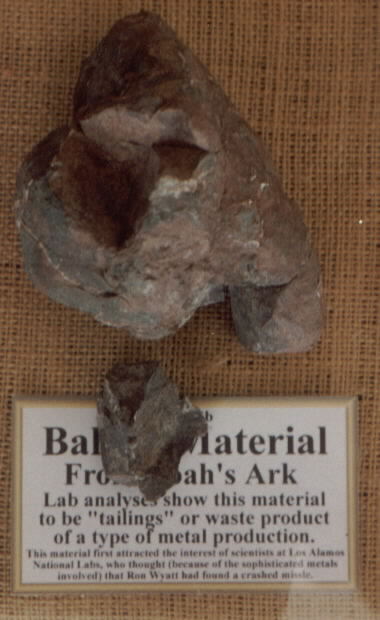
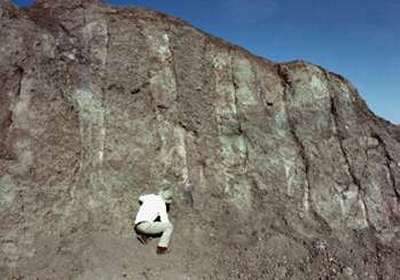
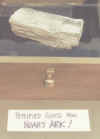
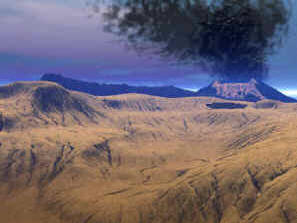
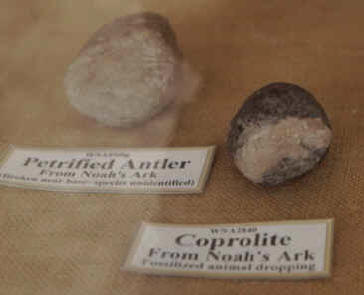
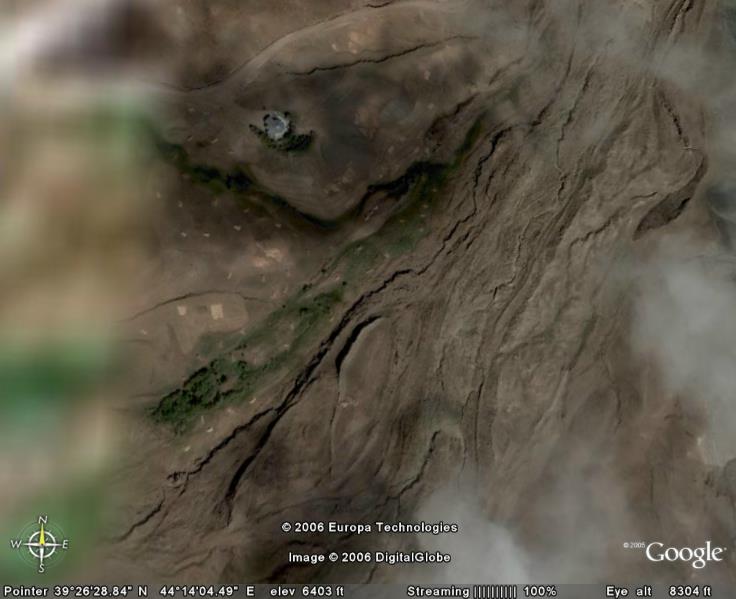

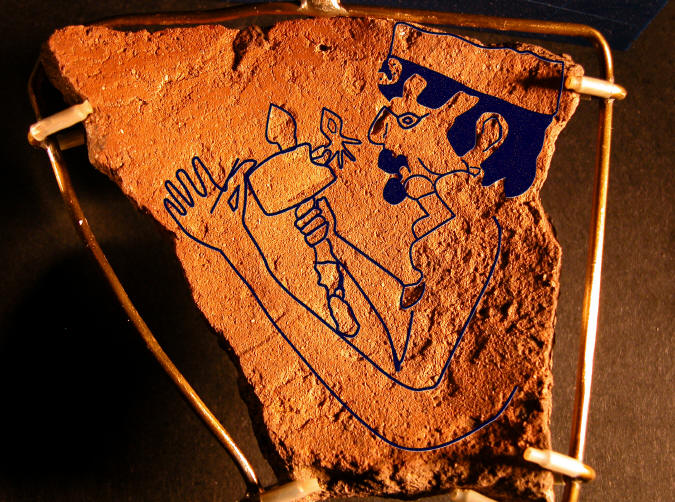
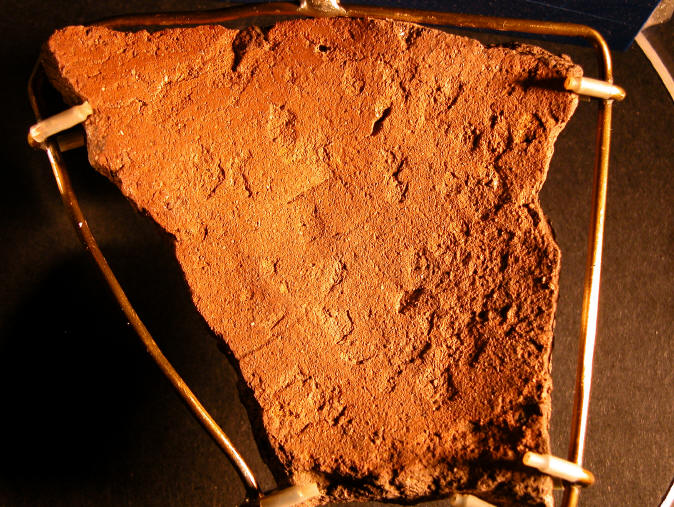
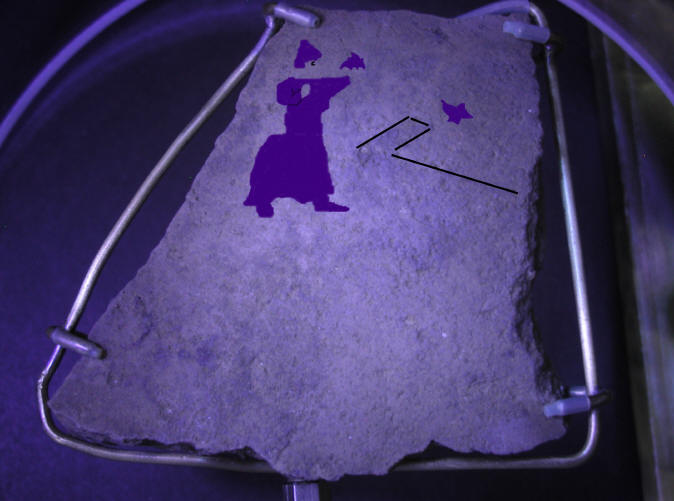
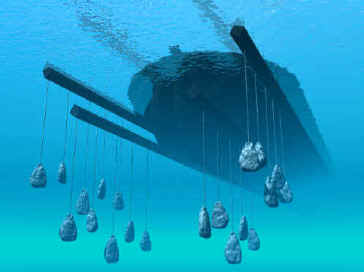
1 comment:
Thank you for this extensive coverage. We had followed Ron Wyatt's discovery in 1987 and remember when Walter Cronkite from CBS TV was there to represent our country and present over the TV station. It was astounding to us to be sitting in our living room, watching and knowing that we were looking at the very place of Noah's ark. A GREAT EVENT.
We enjoyed this tonight. Loved the picture of the area, with a rainbow above it all.
God is still on His throne, giving us rainbows - -to show the world will not be destroyed again by water.
Fred & Wilma Boling
Arkansas, USA
Post a Comment